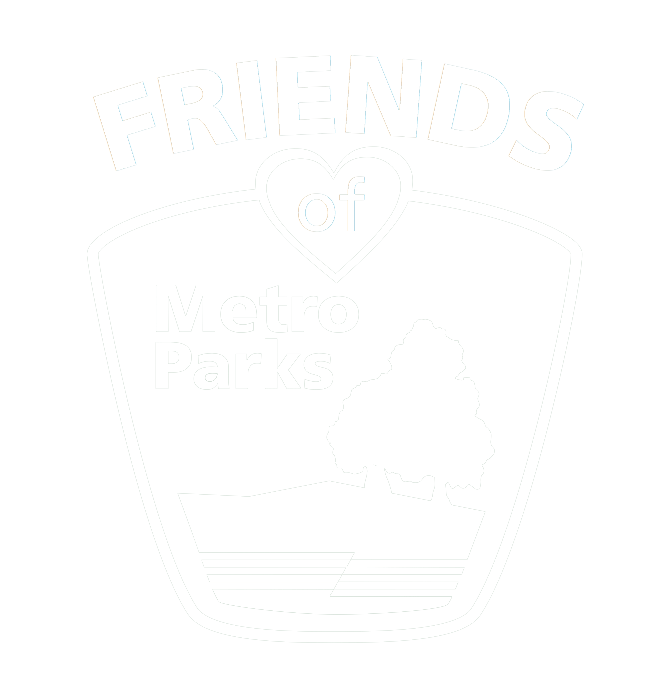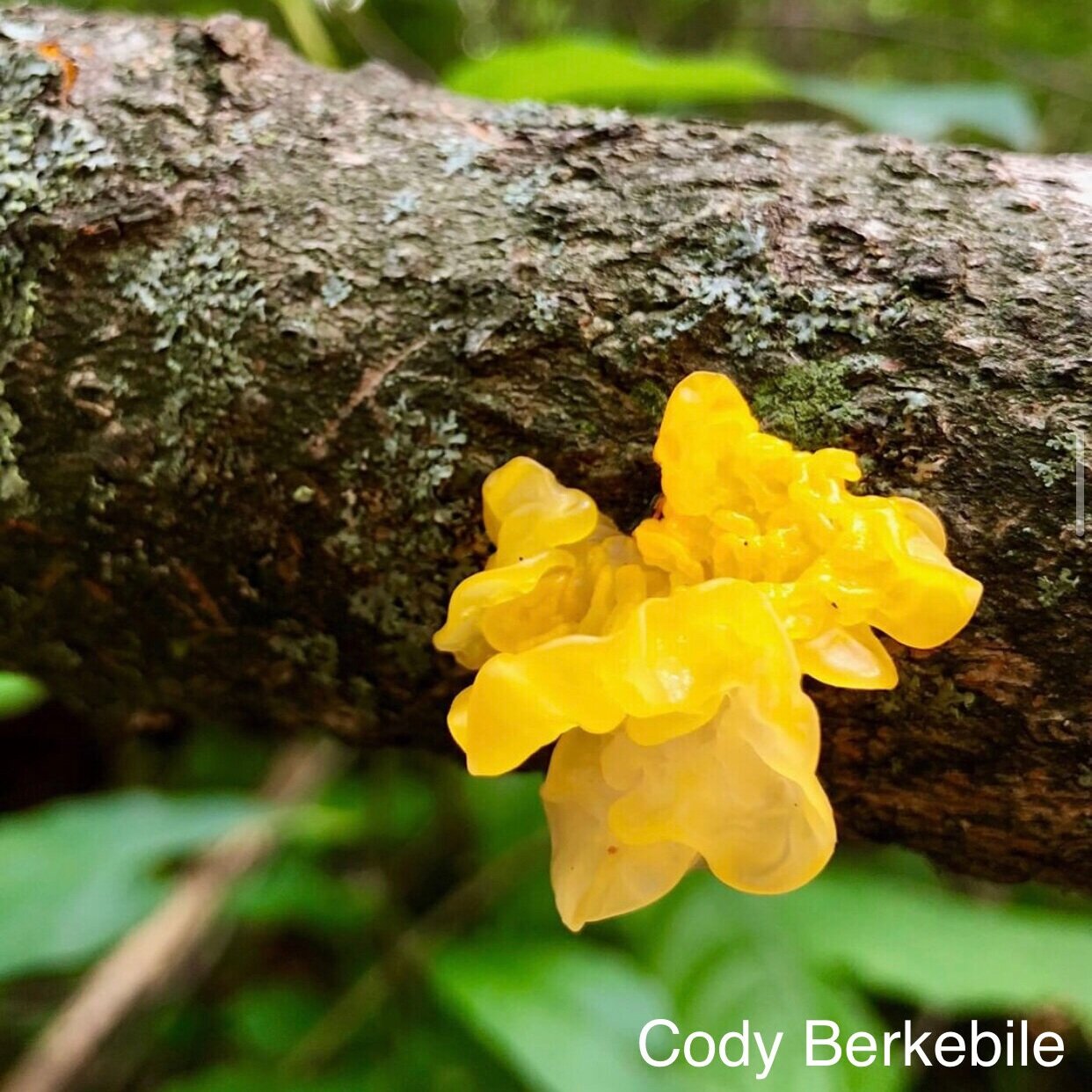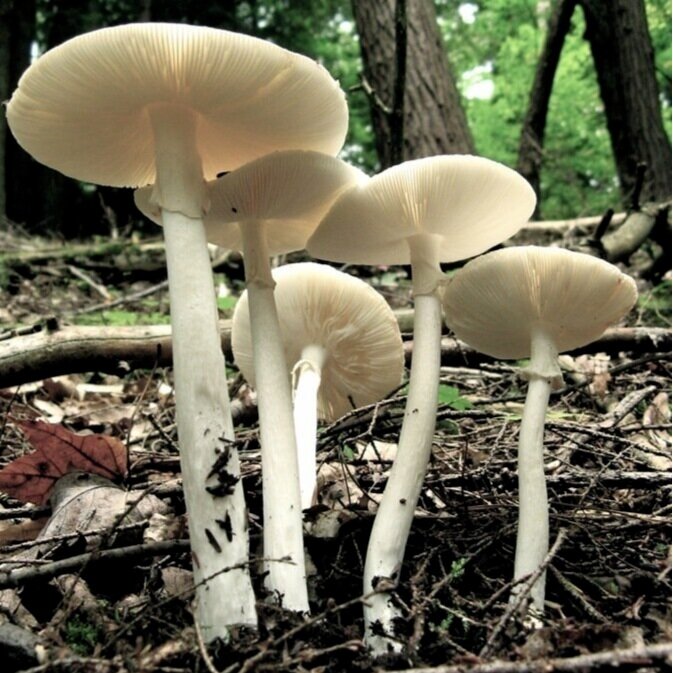By Laura Schneider
The 5 Coolest Mushrooms You Might See in your Favorite Metro Park (ranked entirely by their names!) Mushrooms are just cool. They pop up in all kinds of weird places, grow in a huge variety of shapes and colors, and some people even think that they may have come from outer space (no, really!)
Oh, and many species grow in huge underground networks, like Armillaria, the “humongous fungus”– a single fungus in Oregon that spreads over 37 acres and weighs over 10 tons!
Mushrooms look like plants, but they’re actually more closely related to animals. The biggest difference is that plants can make their own food, but mushrooms (and animals) can’t. Mushrooms rely on decaying plants, animals, and even other fungi to get the nutrition they need.
But the coolest thing about many mushrooms? Their names, of course!
(Drum roll…)
So – here’s the definitive ranking of the 5 coolest mushrooms you might see in your Metro Parks. The only thing we used to rank them is their common names, so this is maybe not what you’d call “scientific,” but who cares! Next time you’re at a Metro Park, look up, down, and all around, and you might see one of these fun fungi:
1. Witch’s butter: Tremella mesenterica
This one makes me think of everyone’s favorite gruesome and disturbing fairy tale, Hansel and Gretel. Remember it? There’s a witch who lives in the woods and she traps Hansel and Gretel, keeps them in a cage, and tries to fatten them up so she can eat them. I mean, WHAT. THE. HECK?
Anyway, when I think of witch’s butter, I think of her stocking up on butter for her upcoming, uh, cooking needs. Sorry.
But forget all that! Witch’s butter is beautiful. It’s a lovely shade of yellow, and is smooth and jellylike, with folds that kind of remind you of a brain. You’ll mainly find it growing on the wood of deciduous trees.
2. Destroying Angel: Amanita bisporigera
Photo By: Kathie Hodge, via inaturalist.com
“Cool name! Oh…wait…is it called ‘destroying angel’ because it’s pois-” YUP.
Sadly, these poisonous little suckers cause most of the mushroom-eating fatalities in North America. So “angel” is maybe not the choice I would’ve gone with, but at least the “destroying” part is spot-on. Doesn’t it sound like it would be a good female wrestler’s name or something?
Destroying angels are rather delicate-looking, with a smooth white cap and narrow stem. They are pretty widespread, and you’ll see them growing from the ground. Interestingly, this type of fungus forms a symbiotic relationship with a few different types of trees, like oaks. Destroying angels can also be found in lawns or grassy meadows, but usually still near trees.
Another interesting tidbit? There are some animals that can eat destroying angels, but – and I can’t stress this enough! – humans are not one of them. Unless you’re a mushroom expert (in which case, I doubt you’d be reading this blog!), you should give mushrooms their space – and keep kids and pets away from them too.
3. Chicken of the Woods: Laetiporus sulphureus
Not to be confused with Chicken of the Sea, or with wild turkeys, Chicken of the Woods is a bracket fungus that can grow pretty large, with irregularly-shaped orange-yellow “shelves” that can get up to 16” or more across. They’re quite common and can be found growing on hardwood trees (often oaks) and also conifers. There are several species of Chicken of the Woods. They are sometimes parasitic, causing rot on trees. Chicken of the Woods mushrooms also do feed on dead and decaying trees (the word to describe fungi that eat dead organic material is “saprotrophic” if you want to sound super well- informed).
Oh, and if you enjoy this name, there are other poultry-inspired ‘shrooms you should look up, like Hen- of-the-Woods, fried chicken mushrooms, and chicken fat mushrooms.
4. Bearded tooth: Hericium erinaceus
This type of mushroom has several names: bearded tooth, pompom, and lion’s mane. I’m using bearded tooth because it’s the weirdest one. I’m curious, did the person who named this one actually look at it and think “It looks like a tooth with a beard” or…?
This mushroom is just all-around cool. It looks kind of like those trendy chandeliers you see in every house on HGTV, right? You’re most likely to see a bearded tooth in the fall, high up in a tree (they like beech and oak). Like Chicken of the Woods, they can be parasitic or saprotrophic.
Apparently, bearded tooth mushrooms are so sought-after that you can buy kits online to grow them. Imagine how bougie your yard would look if each of your trees had one of these fancy fungi on them!
5. False turkey tail: Stereum ostrea
Michael Kuo: mushroomexpert.com
Beware this lyin’, cheatin’, deceivin’ mushroom! Not because it’s poisonous (it’s not), but because it’s trying to bamboozle us all by looking like an actual turkey tail mushroom!
Isn’t there enough trickery in the world already?
Anyway, as the name suggests, this mushroom is shaped like a turkey tail or like a fan. It’s colorful with really interesting patterns, and grows on decaying branches and logs of deciduous trees.
Not to sound superficial, but its looks are kind of the only thing that the false turkey tail has going for it. True turkey tail mushrooms have medicinal uses, but false turkey tails do not. False turkey tails are also not edible because they’re super tough.
How can you tell an honest turkey tail mushroom from this sneaky poser? Look on the underside of the brackets. False turkey tails have a smooth underside, while the underside of a true turkey tail is very porous.
I find it really amusing that the mushroom-naming powers-that-be couldn’t just give it its own name, but decided to make it sound like a phony :)
Honorable Mentions
I’d be remiss if I didn’t at least point out these other cleverly-named mushrooms, so that you can keep an eye out for them too:
Dead Man’s Fingers (Xylaria polymorpha) – because everyone loves a dose of the macabre with their hikes.
Eyelash cup (Scutellinia scutellat) – this sounds like something your lash artist would use for storage, but it’s actually a hairy red-orange mushroom. It’s also known as eyelash fungus, which SOUNDS HORRIBLE!
And, my personal favorite…
Dog Vomit Slime Mold (Fuligo septica) The only reason this one didn’t make the list is that it’s not a mushroom, or any other type of fungus. “Slime molds” used to be classified as fungi, but they were kicked out of the kingdom, so to speak, and are now considered protists.
Doesn’t matter – you’ve seen it. You’ve definitely mistaken it for doggie barf. It’s gross looking and it’s everywhere, especially when it rains. You’ve been meaning to look up what the heck it is, but you keep forgetting. And now you know! You’re welcome :)
Well folks, there you have it! The top 5 coolest mushrooms that you might see in your fabulous Metro Parks! When you see them, or any others, post a picture and tag us @metroparkfriend – we can’t wait to see what you find!
Oh, and one more thing. We know you know this, but it’s a friendly reminder. It’s not safe – or legal – to pick or take any mushrooms from any of your Metro Parks. No matter what type of fungi you come across in the parks, just observe and appreciate them from a safe distance – and be sure to take lots of photos to share with us!





